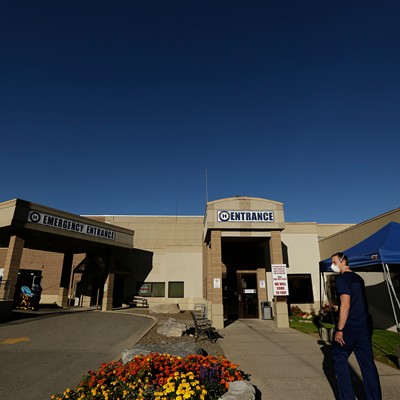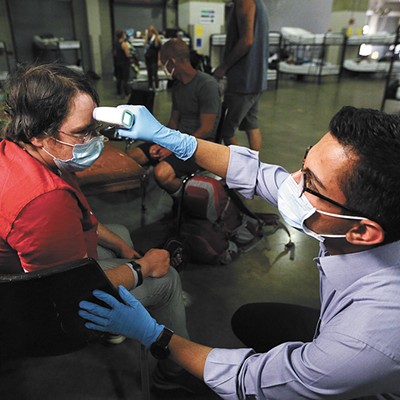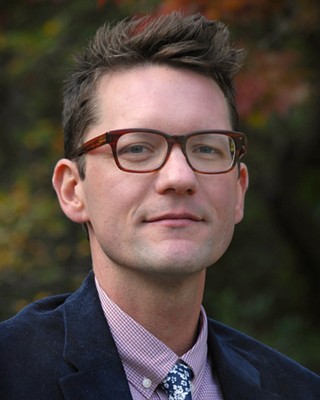The tests, the doctor said, had come back negative. It was a shock to hear, the kind of shock that follows life-altering news. Especially news that comes out of nowhere. Before she got angry, Heather Audel-Neal was just very, very shocked.
“You don’t have multiple sclerosis,” she remembers Dr. Michael Olek telling her. It’s hard to say if she was as shocked as she had been when, lying in a hospital bed, she was told that she did, in fact, have MS. That was, after all, four years ago.
Four long years in which she had lost a career she loved. Four years of extreme fatigue, as she planned her three or four good hours a day around her kids’ school schedules. Four years, it turned out, of not having MS.
“You had a stroke,” Olek told her.
“Would you have ever called this MS?” she asked him.
“No.”
Sitting beside her husband, who was quaking with anger and battling tears, Audel-Neal stared at Olek, struggling to make sense of the words coming from him.
“Well, was my case just really tricky?”
“No.”
As the region’s only trained MS specialist, Olek has delivered similar news to more than 100 people in the year he’s been at Rockwood Clinic. And he’s come to a rather startling conclusion: Spokane doesn’t have an abnormally high number of MS patients.
Decades of being told that Spokane has the second highest prevalence of MS in the world, and the region’s new MS specialist says that it’s nothing but myth. That a lack of training and expertise led to a number of misdiagnoses. That the myth perpetuated itself, with patients and physicians swayed by the reputation. That we’re as normal as we can get when it comes to MS.
“I don’t think we have an epidemic here,” Olek says. “The numbers show a high incidence [of MS]. But maybe the numbers aren’t correct.”
Audel-Neal, sitting in Olek’s office last March, freed of MS, asked him one more question.
“What do I do now?”
Olek’s office is tidy but cramped and doesn’t give the impression that he came to town with big plans. But he did. For one, Olek hopes to turn Rockwood Clinic into a fully functioning MS center, a one-stop shop for patients. There’ll be physical therapy, clinical trials, routine check-ups, orthotics. It’s a monumental change from how Rockwood, with its various locations spread around town, currently does things.
In the meantime, while he proves that such a scheme is profitable, he works from his small office. Two walls are dotted with seven diplomas from institutions like Harvard Medical School and the Philadelphia College of Osteopathic Medicine. There’s a rubber brain on a bookshelf, in front of rows of books on MS. There’s a picture of his dog, Charcot, named after the French neurologist who first identified the disease in 1868.
Olek himself had no personal ties to the disease when he embarked on his career — he didn’t know one person who had it. But he was a medical student with a thirst for research. In 1993, after a few of years of neurology internships and residencies, the excitement surrounding MS — thanks to a new oral treatment, which ultimately failed — compelled him to focus on the disease. He became the clinical neuroimmunology fellow at the Brigham and Women’s Hospital at Harvard and never looked back.
He stayed at Harvard until 2002, treating TV host Montel Williams, among others, before moving to the University of California at Irvine and the University of Texas Southwestern at Dallas. In November of 2007, he landed at Rockwood Clinic.
As the clinic’s only MS doctor, he set about to review the case of every one of its 800 patients.
He focused on four things — the only indicators he needs to re-diagnose or un-diagnose his patients: The patient’s history, an MRI, a spinal tap and a visual evoked potential exam. He says the accuracy rate for diagnosing MS is pretty high with these criteria. “Ninety-nine percent of the time, if all of those line up together.”
So far, 500 patients have lined up for an examination by the new doctor. Olek estimates that he’s re-diagnosed 20 to 30 percent of them. That is, about 100 people who thought they had MS before Olek came to town don’t think that anymore.
Those misdiagnosed with MS are still sick, he points out. They have something. It could be as ordinary as migraine headaches, trauma, high blood pressure or diabetes. Or as serious as a history of substance abuse, lupus or, like Audel-Neal, a stroke. They just don’t have MS.
“When people have a chronic condition and they’re told by one doctor one thing, another doctor another thing, it’s difficult,” Olek says. “Is [my re-diagnosing them with something other than MS] going to impact the patient’s health? I don’t think so.
Fortunately, the medicines that are available for MS, even though they are injectable, are relatively benign. They don’t have any long-term effects. I’ve taken patients off medicines. I don’t think that’s had a big impact on their health. Psychologically, it may.”
As for why there’s such a large number of misdiagnoses, Olek believes it’s a combination of three factors. First, he says many patients weren’t given a complete work-up when they were originally diagnosed. Second, the lack of MRI technology severely limited what tools doctors had when diagnosing some of the area’s MS patients. Lastly, and perhaps most frighteningly, Olek says the idea that the area had a high prevalence of the disease perpetuated itself.
“When people feel that there is a high prevalence of a certain disease in a certain area, then many patients ascribe their symptoms to that disease and fuel the fire,” he says, adding that some doctors were guilty of the same offense.
Another factor leading to the high rate of bad diagnoses is the area’s lack of expertise, Olek says. And he’s not the only one subscribing to this theory: Dr. George Kraft, director of the University of Washington’s Western Multiple Sclerosis Center in Seattle since 1979, agrees.
“Spokane has the revolving door of MS doctors,” Kraft says. Along with Olek, he’s one of only five MS specialists in the state. “I think the expertise there has been pretty skinny. Spokane’s had this marginally competent ability.”
It’s not yet clear how people get multiple sclerosis, but doctors know exactly how the disease works.
As an autoimmune disease, MS causes the immune system to attack the central nervous system. This leads to demyelination, or an eating away of the insulation covering the wires that carry signals between nerves in the brain. Much like an electrical wire, if a signal carrier loses its insulation, the signal is slowed down, even though the wire remains intact.
As brain signals control every bodily function, having MS can greatly impair someone’s ability to lead a normal, healthy life. The disease manifests itself in many ways: extreme fatigue, muscle spasms, speech and vision problems. But the hardest thing for most patients is the battle to lead a normal existence, to get beyond the tiredness and stares from strangers that occasionally accompany the disease.
“I picture MS as an iceberg,” says Kraft. “Ten percent is above the water. That’s what you see. The problems walking, that sort of thing. Ninety percent is below the surface, the emotional impact [such as trouble thinking and motivating].”
The disease mainly strikes young, white women, though doctors aren’t completely sure why. Descendants of northern Europeans are more susceptible to the disease. People living closer to the equator are less likely to develop the disease, leading some to believe there’s a connection between MS and exposure to sunlight, which helps the body produce Vitamin D. And, for whatever reason, many autoimmune diseases are more common in women than in men.
Another theory relates the disease to exposure to viruses, specifically the Epstein-Barr virus.
As a region far from the equator, and with a population mainly made up of white people, Spokane does have a high rate of MS patients. “But I don’t think it’s any higher than anywhere else at this [latitude],” Olek says. “So, Boston is about on the same level as Spokane … and it’s higher than in Miami. But for other places in the country at the same level, we’re about the same.”
According to the National Multiple Sclerosis Society, there are 1,157 people who say they have MS living in Spokane and Lincoln counties, the supposed epicenter of MS. If this is true — and it is noteworthy that these numbers do not come from doctors or any other health professionals — the counties have about 250 MS patients per 100,000 people. Olek, Kraft and others believe the area’s rate stands at about 200 MS patients per 100,000 people.
Regardless, NMSS stands behind its numbers. Kerry Wiltzius, program director for the local NMSS chapter, repeats that Spokane has “the second highest [rate] in the world” before going into the complications surrounding these numbers. “It’s important to note that these numbers are self-reported,” she adds. “This is not the amount of patients. That number you cannot get,” due to patient confidentiality laws.
The society, it turns out, is responsible for gathering the first figures that ultimately led to Spokane’s MS reputation. In 1971, Beulah Townsend took over the Inland Northwest chapter of the NMSS. She was the chapter’s second director, and in 1980 she found herself with a doctoral candidate and a graduate student on staff. She came up with a project for the two.
“I said to them, ‘You go out and find every MS patient you can find,’” she recalls. “They went out and found everybody in every hospital and in every institution.” She probably didn’t realize when she sent out the young scholars that she was planting the seeds for a reputation that would grip Spokane for decades. But plant them she did.
“It’s not a scientific study,” Townsend says. “We got the numbers and I don’t know who put them together and said we had the highest.” Nevertheless, soon after the society’s count, the Associated Press picked up the story.
“Washington’s Lincoln and Spokane counties have the second and third-highest per capita incidence of multiple sclerosis in the world, according to the Multiple Sclerosis Society,” reads an article from 1981. “Only Scotland’s Shetland Islands is considered a higher risk area.”
That same year, the MRI — the most powerful tool in diagnosing MS — was introduced. The first MRI didn’t reach Spokane until 1985, when Inland Imaging brought one in. With their new tool, doctors could distinguish the white spots that indicate MS. But as Olek says, doctors might not have done a complete work-up, or even known how to spot MS in the first place.
“One of the problems is that there are not a lot of neuroradiologists here in the city who are trained specifically to look at brains,” he says. “So I usually look at my own MRIs. There are white spots, but there are about 50 different reasons for having white spots on your brain as opposed to multiple sclerosis, and they look different.”
In a recent article in the journal Neuroepidemiology, entitled “The Accuracy of Prevalence Rates of Multiple Sclerosis: A Critical Review,” the authors state that “many published prevalence rates are inflated. Some studies have shown that relying on clinical information and MRI interpretation leads to one third of incorrect MS diagnoses.”
Nevertheless, here in Spokane, the reputation stuck. Throughout the past 30 years, articles have repeated the claim. A sidebar accompanying a Spokesman-Review story in 1999 said, “The Inland Northwest has the second highest average incidence rate of multiple sclerosis in the world.” A story the following year said that the Holy Family Multiple Sclerosis Center opened “because of the high incidence of the disease in the region. The Inland Northwest is second only to Scotland in the number of people stricken.”
In 2007, a Spokesman article published it again: “Still, rumors have swirled for years that Eastern Washington has the second-highest rate of MS in the world, behind certain sites in Scotland.”
And just last week, an article in the Spokesman repeated the refrain, “the Northwest has a higher incidence of MS than most anywhere on earth,” citing the NMSS Website.
Doctors used the stat as fact as well. In 1998, Dr. Ben Thrower — who ran the Holy Family MS center before moving to Atlanta to run the Multiple Sclerosis Center at Shepherd — told the Journal of Business that the area had the second highest rate in the world.
And so it went. Until Olek showed up.
Dr. Roger Cooke has a spacious, windowless office in the basement of the North Spokane Professional Building, the headquarters of the Holy Family MS Center. Cooke has run the center since 2006, but he’s been involved in Spokane’s medical community since 1975, when he came here as a fresh-faced neurologist. He estimates he’s diagnosed hundreds of patients with MS in that time. And he’s wary of Olek’s conclusions.
“It’s a much higher rate,” he says of the Inland Northwest’s prevalence rate. “I can just tell you from my own experience in town that there is a lot of multiple sclerosis. … The problem is we don’t have exact statistics. Certainly you could speculate: Are we over-diagnosing it? I try to be conservative. I don’t want to give people the diagnosis of MS unless I’m pretty sure they have MS. I think some people have been misdiagnosed with MS. I’ve reversed an MS diagnosis for a few people. Mistakes can be made, but I don’t think we’re making that many mistakes that we’re way out of line.”
He also takes offense at Kraft’s suggestion that Spokane has had a paucity of MS experts. “I think that is a dangerous generalization. There are a lot of very good doctors out here.”
Cooke points to a recent study (pdf) led by William Lambert at the Oregon Health and Science University, which concluded: “This study confirmed the [Inland Northwest’s] perception of high occurrence of multiple sclerosis.”
With methods used to estimate wildlife populations, the study said the prevalence rate in the Greater Spokane area is 196.8 MS patients per 100,000 people. That’s what Olek says it should be at, within the framework of how MS rates go up with increasing latitude. Further, the rates are in line with those in British Columbia and Ontario, Canada, both hovering close to 230 MS patients per 100,000 people, according to the Multiple Sclerosis Society of Canada.
But Cooke, saying he always took Spokane’s MS reputation with “a grain of salt,” still thinks the region has a high rate of MS here. “I think there truly is a higher rate of MS here than in other parts of the country. Whether it’s misdiagnoses or not, I wouldn’t venture to say. I think there have been times here when certain neurologists, some of them no longer here, were quick to the diagnosis. … I have seen some misdiagnoses, but it’s certainly not 20 to 30 percent.”
For the last 10 months, Audel-Neal has cycled through what could be a revolution of grief: shock, confusion, anger, acceptance. But instead of mourning a loved one, she got her life back.
Despite Olek saying (and the drug manufacturers showing through clinical trials) that MS drugs don’t have debilitating side effects, Audel-Neal has experienced a stark result: Her fatigue is finally gone, her tremors have lessened and the fog in her mind has lifted. All were erased when she stopped taking Copaxone, a popular MS drug she self-injected for those four years.
Now that she’s back to herself again, she doesn’t want to spend another ounce of energy on MS, the incurable disease she used to have.
She’s had to accept a lot in the last few months. Her career as an art instructor is still gone. Her daughter is almost 18, ready to embark on her own path, and her 15-year-old son is now a young man. There’s a baby aspirin in her life every morning, rather than the injections of Copaxone. She’s moved from being an MS patient to a woman who had a stroke, the result of her having Hughes Syndrome, a disorder that causes increased clotting of the blood. It took awhile, but she’s come to terms with all of that. The one thing she hasn’t fully accepted yet is her misdiagnosis.
“Dr. Olek performed blood tests that I had never had,” she says, barely concealing her anger and frustration. “How could three doctors have gotten it this wrong?”

























